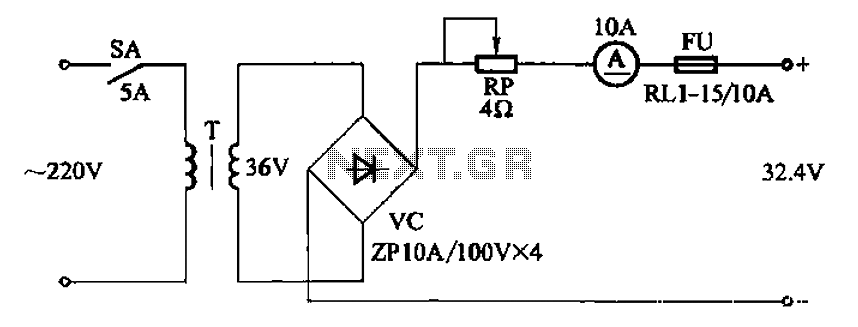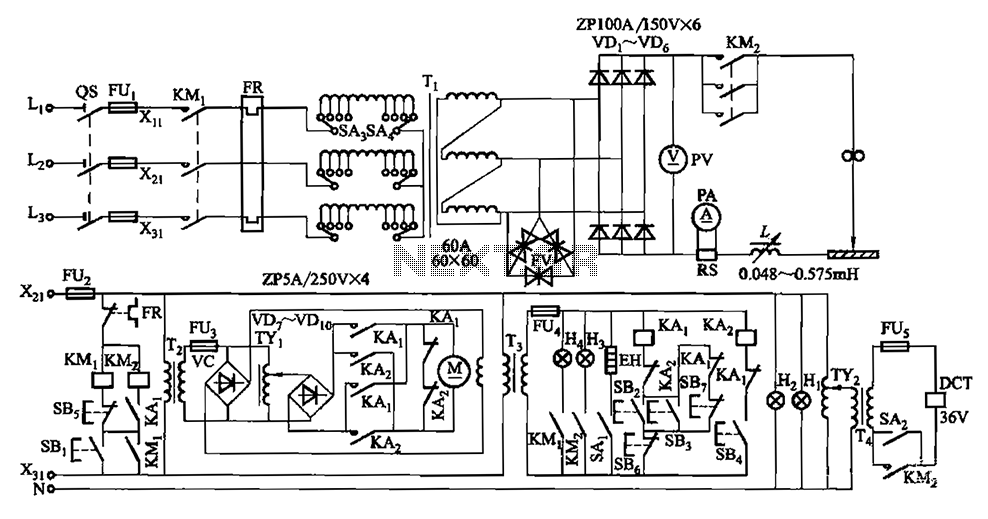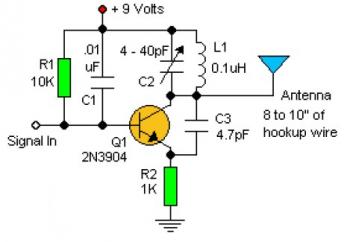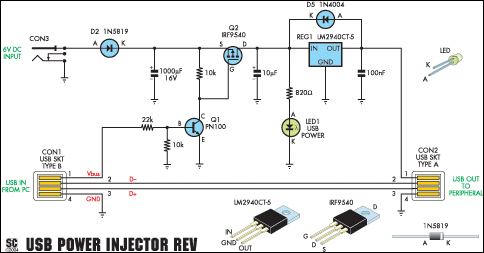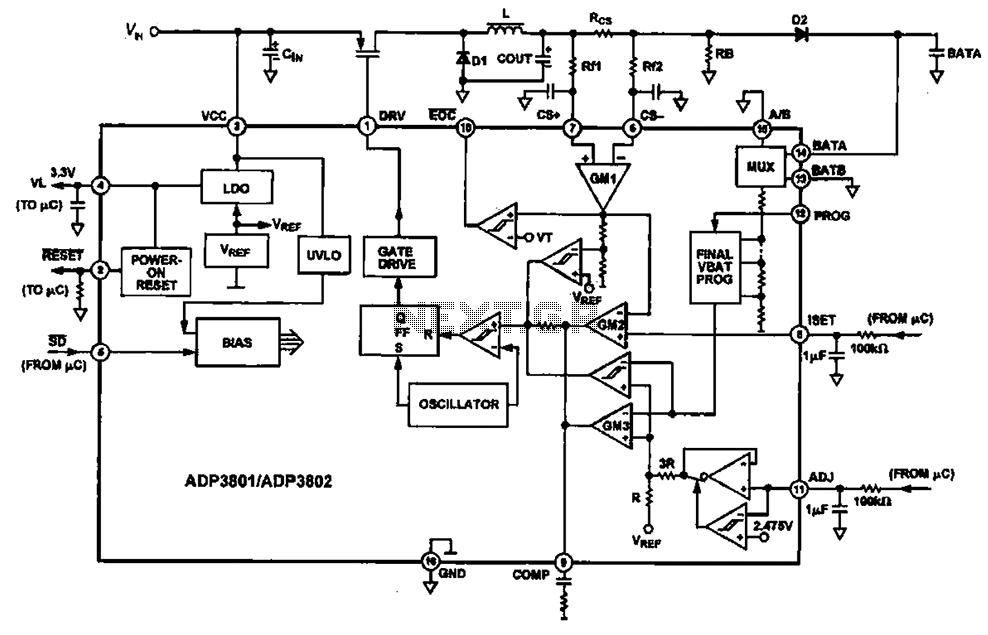
Capacitor step-down DC power supply circuit

A capacitor step-down DC power supply circuit is presented. This circuit eliminates the need for power transformers, utilizing capacitive voltage drop rectification and regulation, which significantly reduces the overall size of the circuit. The circuit includes a capacitor step-down component, rectifier diodes VD1 and VD2, and an AC input of 22V. The output is stabilized to 6V DC through a resistor (R1) and a regulator (VD3). Additionally, filter capacitor C2 is employed to further eliminate high-frequency components from the power supply.
The capacitor step-down DC power supply circuit operates by using capacitive reactance to limit the current flow from the AC source, in this case, a 22V AC supply. The initial AC voltage is applied to a capacitor that effectively reduces the voltage level before it is rectified. The rectification is achieved through the diodes VD1 and VD2, which convert the AC voltage into pulsating DC.
After rectification, the voltage is smoothed and regulated to a stable output of 6V DC using resistor R1 and voltage regulator VD3. The resistor plays a crucial role in limiting the current and ensuring that the voltage across the regulator remains within its operational limits. The regulator VD3 is responsible for maintaining a constant output voltage despite variations in input voltage or load conditions.
To further enhance the quality of the output voltage, filter capacitor C2 is included in the circuit. This capacitor serves to filter out any remaining high-frequency noise, resulting in a cleaner DC output. The combination of these components allows for an efficient, compact power supply solution suitable for various electronic applications where space is a constraint, and the elimination of bulky transformers is desirable.
Overall, this capacitor step-down DC power supply circuit is an effective design for providing a reliable low-voltage DC output from an AC source while maintaining a small footprint. Capacitor step-down DC power supply circuit Shown is a capacitor step-down DC power supply circuit. This circuit eliminates the need for power transformers, capacitive voltage drop rectifier and regulator, so that the volume of the circuit is greatly reduced. CJ capacitor step-down capacitor, VD1, VD2 rectifier diodes. AC 22V voltage through cl down and VD1, VD2 rectifier, by the resistor Rl and regulator VD3 stable output 6V DC voltage. Filter capacitor C2 is further filtered except the power to bring the high-frequency component.
The capacitor step-down DC power supply circuit operates by using capacitive reactance to limit the current flow from the AC source, in this case, a 22V AC supply. The initial AC voltage is applied to a capacitor that effectively reduces the voltage level before it is rectified. The rectification is achieved through the diodes VD1 and VD2, which convert the AC voltage into pulsating DC.
After rectification, the voltage is smoothed and regulated to a stable output of 6V DC using resistor R1 and voltage regulator VD3. The resistor plays a crucial role in limiting the current and ensuring that the voltage across the regulator remains within its operational limits. The regulator VD3 is responsible for maintaining a constant output voltage despite variations in input voltage or load conditions.
To further enhance the quality of the output voltage, filter capacitor C2 is included in the circuit. This capacitor serves to filter out any remaining high-frequency noise, resulting in a cleaner DC output. The combination of these components allows for an efficient, compact power supply solution suitable for various electronic applications where space is a constraint, and the elimination of bulky transformers is desirable.
Overall, this capacitor step-down DC power supply circuit is an effective design for providing a reliable low-voltage DC output from an AC source while maintaining a small footprint. Capacitor step-down DC power supply circuit Shown is a capacitor step-down DC power supply circuit. This circuit eliminates the need for power transformers, capacitive voltage drop rectifier and regulator, so that the volume of the circuit is greatly reduced. CJ capacitor step-down capacitor, VD1, VD2 rectifier diodes. AC 22V voltage through cl down and VD1, VD2 rectifier, by the resistor Rl and regulator VD3 stable output 6V DC voltage. Filter capacitor C2 is further filtered except the power to bring the high-frequency component.

